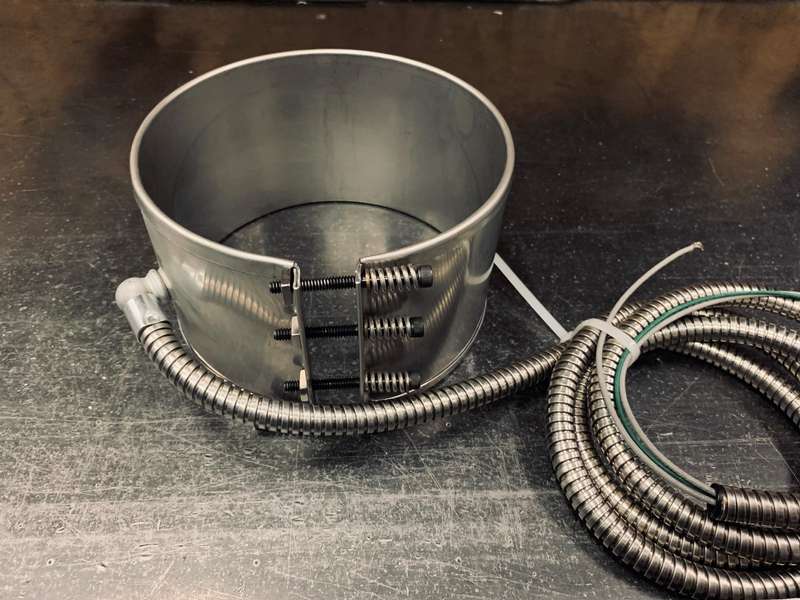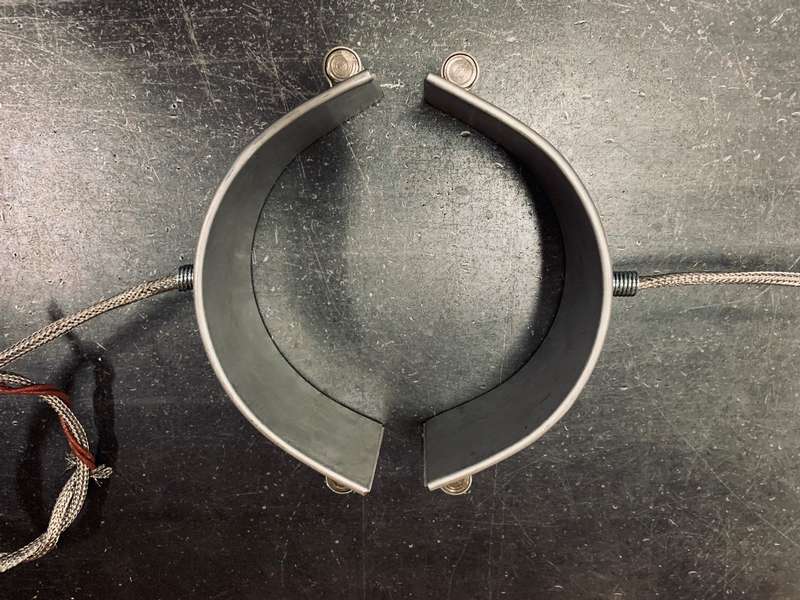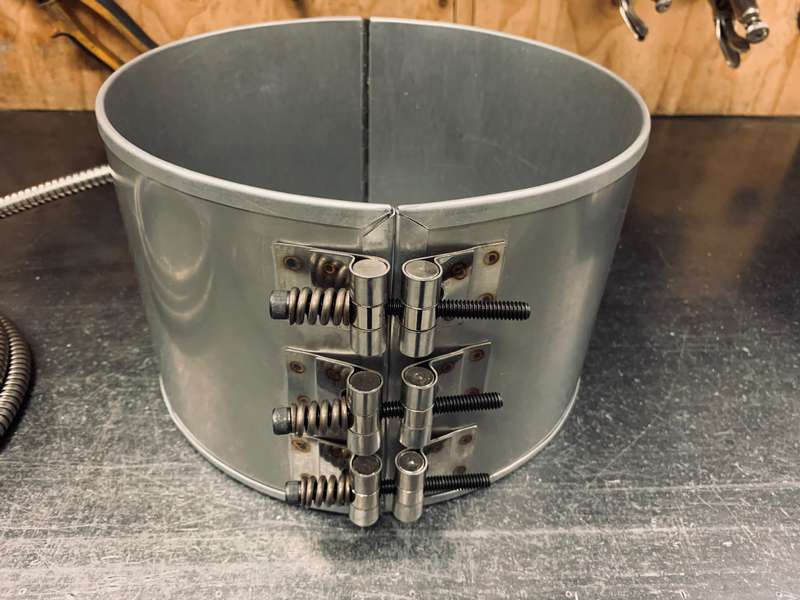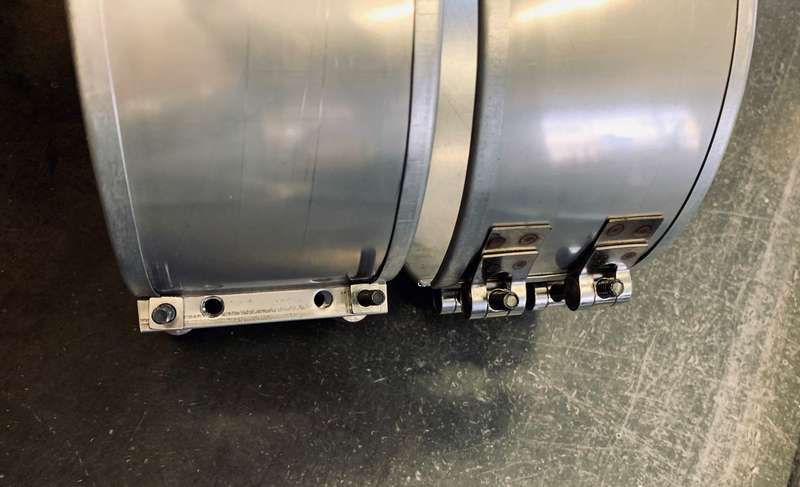Tabs or barrel nuts? That is the question!

We tend to think that barrel nuts are the best way to properly tighten a band heater. But is it?
Tabs
Regarding the tabs or what is commonly referred to as flanges, the closing screws are elevated and do not run along the cylinder. This misalignment applies an excellent tension to the band, as long as the screws are being retightened while hot, once the band has expanded. The conductive heat transfer is therefore optimum, assuming the band has been properly formed by the manufacturer. In other words, having a perfectly round shape, considering its diameter.

Mica band heater with tabs
| Guess what! We noticed that it's often the 2 pieces construction band that are not formed perfectly round considering their diameter, |
| since it is a bit harder to form a 2 pieces construction than a 1 piece construction band. |

2 pieces construction mica heater band not shaped well
If you notice good contact towards the end of the band but looser fit at approximately 0.50¨- 0.75¨ from the gap, we suggest you to tap the entire surface of the band, using a rubber mallet, always starting either in the center of the band or its section, towards each end.
Barrel nuts: The trend of recent years!
Barrel nuts need more elevated screws compared to tabs. The wider the band, the bigger the screws supplied. They are higher than the small screws used with barrel nuts on small bands. From that point of view, tabs (or flanges) are superior to barrel nuts.

Mica heater band with barrel nuts
Below, to your left, a band with tabs, and to your right, a band with barrel nuts. We can see that barrel nuts' screws are located slightly higher than tabs, which can affect pressure maintained on the band's gap.

When the band is tightened at room temperature and heats, it expands due to heat by 0.5%. This can lead to band tension release. To counteract this effect, springs are added on the screws, however the ideal tension required in a large diameter band is such that even our heavy duty springs must be completely compressed using proper tightening to maintain same tension as at the beginning.
Simply put, if the tightening is not adequate, heavy duty springs on barrel nuts may diminish negative impacts. However, tabs (or flanges) will ensure the best contact pressure provided they are tightened when cold and retightened while hot.
Retighten while hot: Really necessary with barrel nuts?
It is a false belief to think that with barrel nuts, considering the presence of a spring, it won’t be necessary to retighten while hot. Retightening while hot, whether equipped with tabs (flanges) or barrel nuts, offers significant gains to the tension of the band: It will operate at lower temperature, increasing its service life and reducing maintenance shutdown frequency. Of lesser importance if the band has a low power density (Less than 20W/sq.inch) or a small diameter (4” or less); but more important if the band has a standard spring or no spring, with barrel nuts (depending on the manufacturer). At Volton, starting at 10” in diameter, we install heavy duty spring on our barrel nuts.
Please note that ceramic bands are radiant, thus do not need contact pressure to provide good heat transfer.
 Skip site navigation
Skip site navigation




















